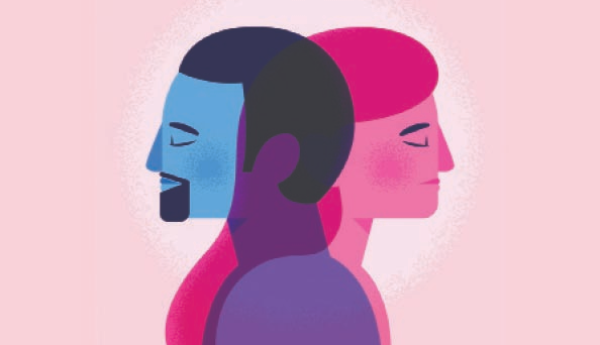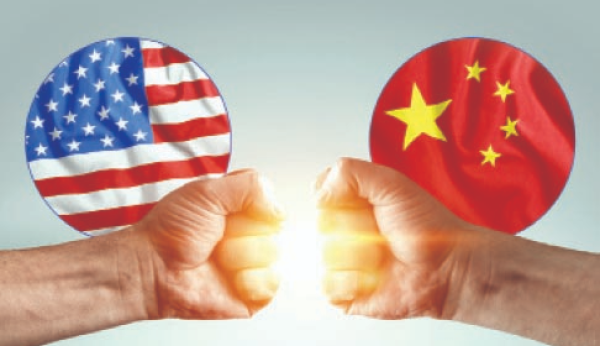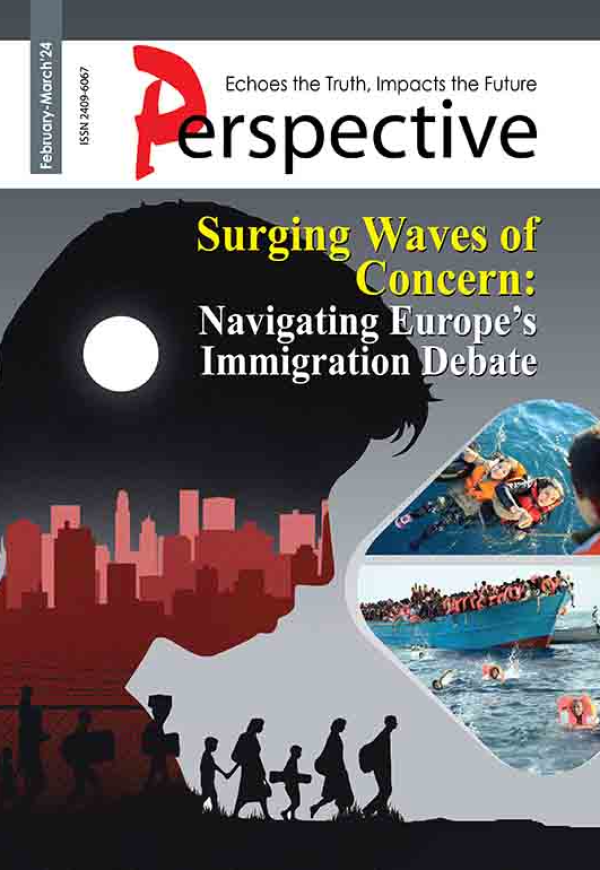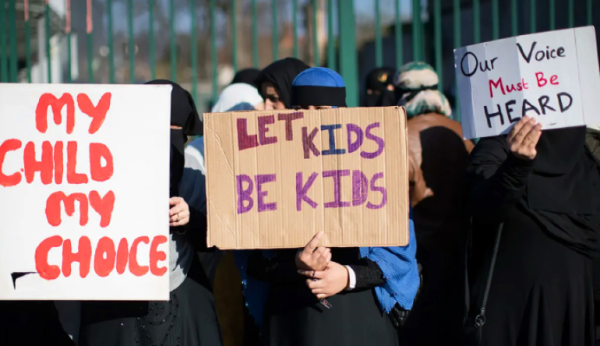Exploring the Negative Impact of Transgender Stigma on Well-Being and Socioeconomic Prosperity
Exploring the Negative Impact of Transgender Stigma on Well-Being and Socioeconomic Prosperity
Exploring the Negative Impact of Transgender Stigma on Well-Being and Socioeconomic Prosperity

Transgender serves as an encompassing term for individuals whose gender expression and identity deviate from the sex assigned to them at birth. Birth-assigned sex characteristics, for example, genital organs, breasts, or voice tone, dissatisfied psychologically themselves. In this scenario, individuals experience a sense of incongruence between their physical body and inner identity, leading them to identify as female despite being biologically born as male or vice-versa. People who declared themselves transgender freely chose a new name and used new personal pronouns for them. Again, they undergo medical treatments or procedures to align their physical bodies with their gender choice. To make a concurrent adjustment to their outlook and clothing style, some transgender individuals are willing to take hormones or other medical treatments. Meanwhile, others decide on a physical transition, undergoing major medical surgery such as chest or genital surgery or facial feminization procedures. Moreover, they wish to update their details in relevant documents such as passports, driving licenses, or any other identity cards. The duration of the transition process can vary, spanning from months to years, depending on individual preferences and available opportunities.
From a cultural standpoint, society acknowledges only two distinct types of sex, male and female, on the basis of physical characteristics and human genitals. This binary classification extends to the construction of gender roles, styles, and behaviors in society. Within this framework, traditional gender identities are deeply ingrained, associating masculinity with traits like strength and velour for men and femininity with traits such as softness, beauty, and emotional expression for women. As a consequence, individuals who deviate from these cultural norms, regardless of their biological sex, are considered to have abnormalities.
In Islam, humankind was created into two distinct genders, male and female. Biologically, individuals are categorized as either male or female, aligning with the gender identity assigned to them at birth. This perspective is rooted in certain interpretations of religious texts and teachings within Islam that emphasize a binary understanding of gender. Indeed, in the Holy Quran, it is affirmed that all human beings are descended from Adam and Eve (An-Nisa; 4:1). This narrative is often mentioned in various verses, emphasizing the common origin of humanity. For example, “O mankind! We created you from a single pair of males and females and made you into nations and tribes so that you may know each other (not that you may despise each other). Verily, the most honored of you in the sight of God is the most righteous of you” (Al-Hujurat, 49:13). The Quran underscores the idea that all individuals, whether male or female, share a common ancestry, and their diversity is a sign of Allah’s (SWT) creative power. Certainly, the acknowledgment of deviations from a presumed global formula, as discussed in religious or cultural contexts, does not negate the potential for diverse and unique experiences to unfold. This includes, for instance, ambiguous genitals, where the clear binary distinction between men and women is not easily discernible. Islam acknowledges the diversity within creation and recognizes that individuals may be born with physical conditions that don’t conform to the typical male or female characteristics. The Islamic view on deviations from the binary framework problem can be found in the sacred text of Islam, which is the Quran, though it is not specifically described. A more specific explanation of this problem can be found in the redaction of the hadith of the prophet Muhammad (peace be upon him) as a second authoritative source after Al-Quran as well as in Islamic jurisprudence (fiqh).
On the basis of Hadith, classical Islamic law widely discusses four genders among human beings: male, female, intersex (khunsa), and effeminate male (mukhannath). The gender type khunsa is then divided into two subcategories: khunsa ghayr musykil (indisputable) and khunsamusyki l (problematic or intractable). The dominance of one genital organ over the other determines the sex of a person who has both male and female genitals, or khunsa ghayr musykil. By contrast, in the second category, sex determination is problematic because they cannot easily be classified as either male or female, as this type of individual continues to urinate from both the penis and the vagina. With the advancement of the modern medical sector and associated technologies, however, physicians now have enhanced capabilities to determine the appropriate sex for individuals with such a problem. Intractable individuals’ appropriate sex can be solved by investigating the person’s karyotype, gonadal tissue histology, and internal reproductive organs, and do not just depend on the appearance of the external genitalia. In accordance with Shariah law, in situations involving khunsamusykil, surgical procedures may be considered if recommended by medical experts. The objective is to ascertain the true sex of the khunsa individual, allowing for the assignment of a specific sex. This is intended to contribute to a fulfilling life and enable the person to carry out their responsibilities as a Muslim. Khunsa people are treated as Hijrain sub-continental regions. And unfortunately, they are deprived of social or state-guaranteed human rights; these individuals find themselves ostracized by society and even their own families. Consequently, they endure an incredibly inhumane existence. In many cases, their means of survival involve engaging in activities like extortion, terrorism, or the drug trade. Some unscrupulous individuals exploit this situation, offering them only the basics of food and shelter in exchange for basic necessities like food and shelter. But, in Islamic history, the culture was that all the departments of the government ensured their human rights as well as those of other normal people. For mukhannath, Al-Nawawi said (for the explanation of Hadith No. 2180, Shahi Muslim), “Effeminate men are two types. First, he was created that way, and he is not responsible for his behavior resembling women, their appearance, their speech, or their movements. This type of person is also referred to as Mukhannath min Kalqin. Rather, Allah (SWT) created him upon his disposition, so this is not blameworthy for him, neither a fault nor a sin, nor is he punished. He has the excuse of not being able to control that. For this reason, the Prophet (peace be upon him) did not condemn him at first when he entered the homes of women, nor did he condemn his behavior as it was originally his disposition. Indeed, he condemned his behavior after his deliberate imitation of women was made known to him, and he did not condemn his description as an effeminate man in itself. Second, an effeminate man (Mukhannath bi al-Takalluf) whose disposition is not like that Rather, he is responsible for his behavior resembling women, their movements, their appearance, their speech, and mimicking their presentation. This is blameworthy, as has come in the authentic traditions cursing him... As for the first type, he is not cursed.”
Recently, the media and people who have taken a stance in support of transgender rights have been attempting to conflate the concepts of khunsa/intersex and transgender to broadly normalize transgenderism in society. However, intersex and transgender people are entirely different from each other. Biologically, a “child” would typically have either XX-female or XY-male chromosomes. If a deviation occurs, the baby may develop as intersex, with either 46-XX-intersex or 46-XY-intersex chromosomes. Sometimes, it can be a case of true reproductive (ovotesticular) or complex or intermediate intersex. A developmental sexual disorder, or difference, is responsible for this kind of condition. On the other hand, trans means having a gender identity or expression that is different from the biological sex (male to female or female to male). For the transition from male to female or female to male, they are willing to undergo either medical treatments or a physical transition using medical surgery. They also make concurrent adjustments to their outlook and clothing style. Both of these types of actions are not only forbidden in the eyes of Islam but also cursed by Allah and His Messenger (PBUH). Changing one’s gender is considered a forbidden act in Islam (AnNisa 4:119). Additionally, it is prohibited for a man to wear women’s clothing or for a woman to wear men’s clothing (Abi Dawud 4098).
Another stance of trans supporters is that transgender and homosexuality are not the same thing. But in a broader sense, transgender people ultimately lead to homosexuality. How the trans issue supports homosexuality is depicted in a pictorial form below. It is very simple that a trans male (actually a biological female) will show sexual interest in a biological female, and vice versa, which leads to homosexuality.
Dissatisfaction with one’s assigned birth sex can lead to feelings of isolation and psychological difficulties. Additionally, transgender individuals face a higher prevalence of depression, anxiety, and loneliness compared to the general population. Both trans men and trans women also exhibit an increased incidence of suicide attempts. Despite claims and opinions suggesting mental health improvement after transition surgery, there is a lack of robust evidence supporting this. Besides mental health problems, transgender individuals are also more susceptible to certain types of chronic diseases and cancers. There are some potential risks associated with hormone therapy (hormones used to make appearance changes). Taking high doses of testosterone or using it orally can have adverse effects on the liver. Oestrogen, on the other hand, may increase blood pressure, blood glucose levels, and the likelihood of blood clotting. Anti-androgens such as spironolactone can lower blood pressure, disrupt electrolyte balance, and result in dehydration. Moreover, trans people are at high risk for heart and sexually transmitted diseases. Organ cancer is a possibility for transgender men who retain their ovaries, breasts, or uterus.
The issue of transgender participation in sports has become increasingly intricate in recent years, notably exemplified when New Zealand weightlifter Laurel Hubbard qualified for the Tokyo Olympics. World Athletics has voted to ban transgender women from competing in elite female categories, aligning with decisions made by other sports such as World Rugby in 2020, World Swimming, and the International Rugby League. The swimming community’s choice to ban trans women came shortly after Lia Thomas, formerly a male college swimmer in the United States, won an NCAA national college female title in 2022. Also, Swim England, Scottish Rugby, FINA, and England’s Rugby Football Union, all of which have banned trans women, argued that trans women possess inherent physical advantages over individuals born biologically female, owing to the effects of testosterone on their bodies. This holds true even when they undergo gender treatment or other interventions to suppress testosterone levels. Additionally, World Athletics made a notable decision that athletes with different sex development would be ineligible to compete internationally in all events unless they reduced their testosterone levels to 2.5 nm/L for a minimum of six months. In June 2022, Soccer’s FIFA, World Netball, and International Hockey Federation said they would also review their policies. In 2019, tennis champion Martina Navratilova expressed her stance, stating that allowing transgender women to compete in women’s sports is both “insane” and tantamount to “cheating.”
The transgender experience is generally characterized by a decline in overall well-being rather than an improvement in quality of life. In recent years, countries like Sweden and Finland have revised their guidelines to reflect this reality. The updated guidelines now priorities psychotherapy as the primary treatment for gender-dysphoric youth, rather than immediately resorting to puberty blockers and cross-sex hormones. Furthermore, these guidelines limit surgical interventions to individuals under the age of 18. It is worth noting that undergoing a gender transition does not guarantee an enhanced quality of life. To illustrate this point, let us consider the perspective of a former transgender female who articulated that, although surgery provided me with temporary relief, I soon discovered that my childhood trauma still haunted me beneath the surface. Despite outwardly presenting as a woman, I continued to experience gender dysphoria, feeling like a male trapped in a body that had been altered to resemble a female. While I was living my envisioned life, I still battled intense thoughts of suicide.
References:
1. Verbeek, M. J., Hommes, M. A., Stutterheim, S. E., van Lankveld, J. J., & Bos, A. E. (2020). Experiences with stigmatization among transgender individuals after transition: A qualitative study in the Netherlands. International journal of transgender health, 21(2), 220-233.
2. Jasruddin, J., &Daud, J. (2015). Transgender DalamPersepsi Masyarakat. EQUILIBRIUM: Jurnal Pendidikan Sosiologi, 3(1). https://doi.org/10.26618/jps-postkrit.v3i1.509
3. Afif, M. B. (2019). Islam and transgender (A study of hadith about transgender). International Journal of Nusantara Islam, 7(2), 185-189.
4. Zainuddin, A. A., &Mahdy, Z. A. (2017). The Islamic perspectives of gender-related issues in the management of patients with disorders of sex development. Archives of sexual behavior, 46, 353-360.
5. Haneef SSS. Sex reassignment in Islamic law: The dilemma of transsexuals. International Journal of Business, Humanities and Technology. 2011;1:98–107.
6. Mohd. Al-Bakri, Z. (2011). KertasKerjaMemahamiisu-isukekeliruanjantinadarisudutsyariah. Seminar memahamiisu-isukekeliruanjantina [A working paper on understanding gender dysphoria issues from the Syariah’s perspective. A seminar on understanding gender dysphoria issues]. Bangi, Kuala Lumpur: InstitutLatihan Islam Malaysia (ILIM) and JabatanKemajuan Islam Malaysia (JAKIM).
8. Ring, Avi and William J. Malone. “Confounding Effects on Mental Health Observations After Sex Reassignment Surgery.” The American Journal of Psychiatry (August 1). Available at https://ajp.psychiatryonline.org/doi/10.1176/appi.ajp.2020.19111169.
9. Program for LGBTQ Health. Published by Vanderbilt University Medical Center. https://www.vumc.org/lgbtq/key-transgender-health-concerns.
10. “World Athletics Council excludes transgender women from female events” by Sean Ingle, published on 23rd March 2023, The Guardian.
11. “Trans athletes in sports: what’s the debate?” by Lucy Middleton, published on 17 July 2023, Openly News.
 Mamun Mia
Mamun Mia 








